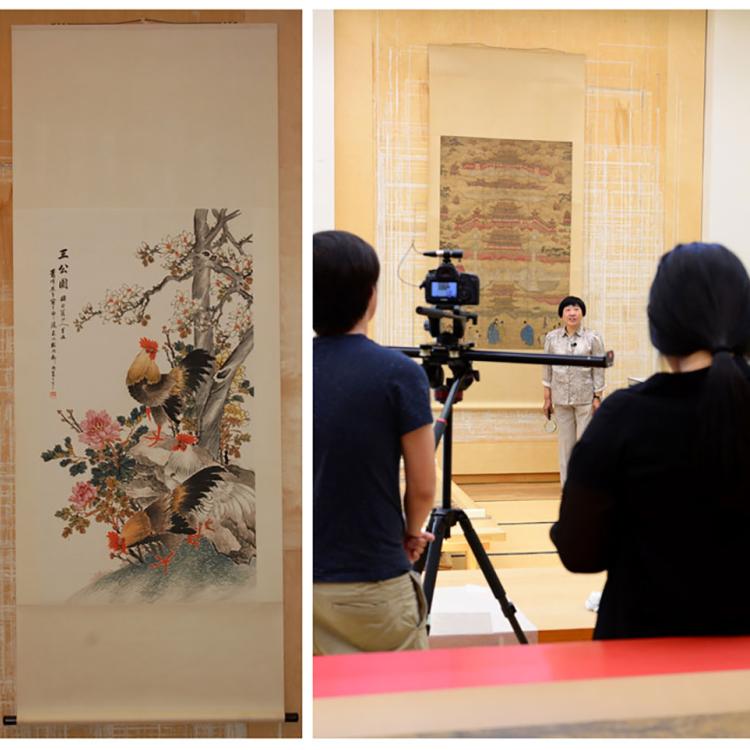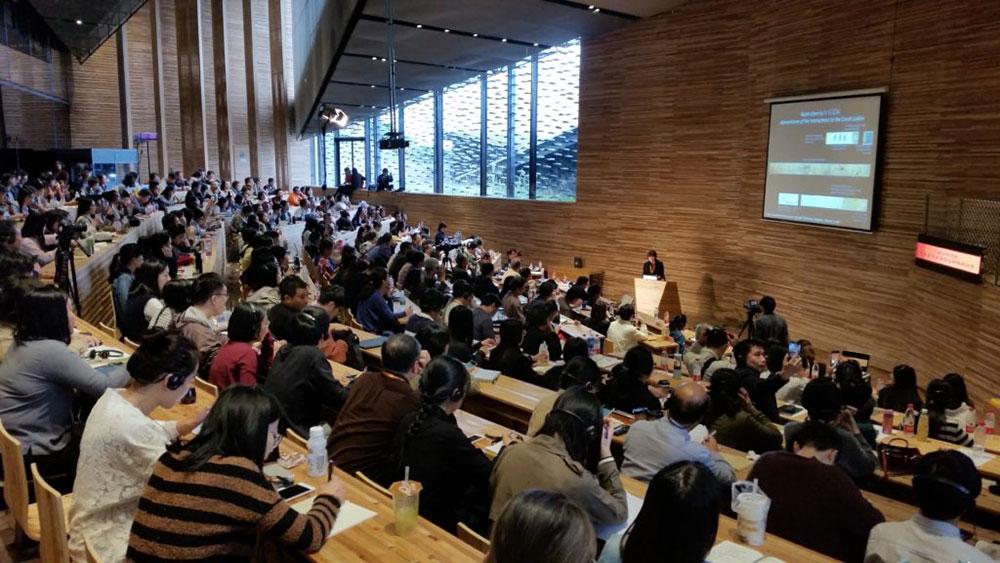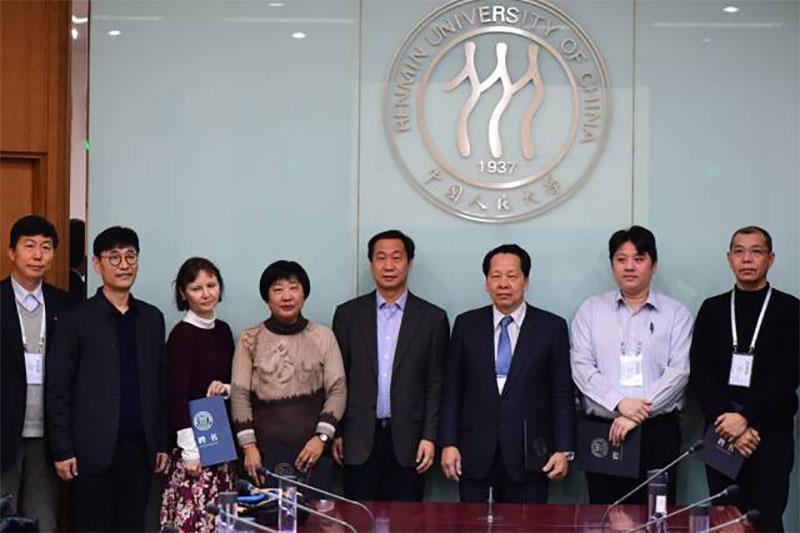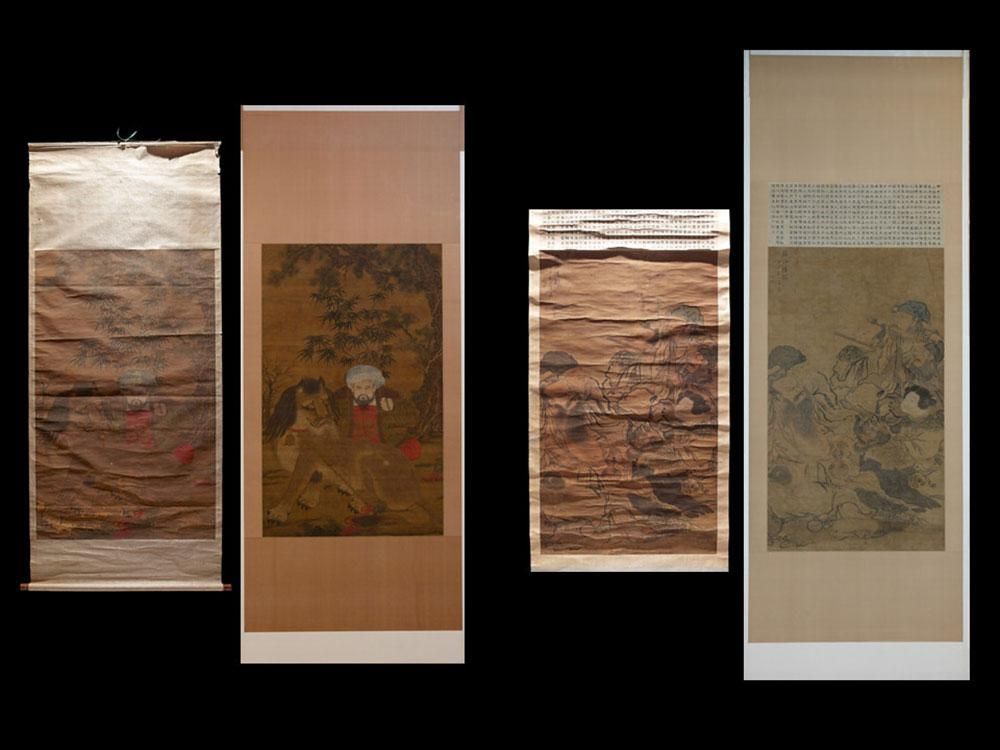As the year of the rooster approaches, the Chinese scroll mounters in the Hirayama Studio have plenty to crow about…
Chinese scroll mounting at Chinese New Year
We have recently witnessed a real surge of interest in the traditional methods of conserving Chinese paintings over in China, and as a result, our Senior Conservator of Chinese Paintings and Master Scroll Mounter, Jin Xian Qiu, has been inundated with publicity requests asking about her work here in the British Museum as well as the amazing story of how she came from Shanghai to London 30 years ago, bringing Chinese scroll mounting techniques to a European institution for the first time. For those Chinese speakers among you, check out this short film that was recently produced by Hua Plus' UK team all about Qiu Laoshi (this is how we, her students refer to her and means 'Teacher Qiu'). The video has been incredibly popular on various online platforms and at the time of writing has been viewed around half a million times. For those not blessed with Chinese linguistic skills, you can see Qiu Laoshi in action with English commentary here on the British Museum YouTube channel as part of the World History Lab series.
As well as these short films, Qiu Laoshi has been busy giving press interviews both here in the UK and in China, where she and our Head of Pictorial Art Conservation, Joanna Kosek, were recently invited to share their expertise at two conferences dedicated to the conservation of Chinese painting and calligraphy. There is currently huge momentum in China to train up the next generation of conservators, with the setting up of training courses and new conservation centres, as well as publicising the traditional techniques that have been previously somewhat invisible, behind the scenes, and, perhaps, closely guarded. The Palace Museum, based in the Forbidden City in Beijing, last year released a popular series of documentaries showing the behind the scenes work carried out by the many conservators there and we particularly enjoyed this one focusing on the work of their scroll mounters (Chinese commentary again).
The art of the scrollmounter is complex to master, and training takes around 10 years in a traditional apprenticeship set-up. We in the British Museum are incredibly lucky that Qiu Laoshi has trained up a number of conservators, including Valentina Marabini and myself, who have been with Qiu Laoshi for 13 and 6 years respectively. To learn this traditional Eastern craft here within a Western institution is a truly unique opportunity, made only possible by Qiu Laoshi dedicating her career to conserving the British Museum's amazing and extensive Chinese paintings collection. She often says that her work enables these paintings to be brought back to life, rejuvenated like a tree in springtime, as they would otherwise be in too poor a condition to display. She really is a national treasure for both China and the UK!
In a Western conservation culture that often practices 'minimal intervention' to museum objects, there is no denying that the traditional techniques of the Chinese scroll mounter are highly 'interventive' – in a full remounting treatment we remove old silk mounts (the borders framing the paintings), wash the paintings, replace old lining papers with new ones, repair missing areas and create new mount surrounds that display the painting beautifully as well as provide a fantastic storage system when rolled up and put away. It is only by this method of remounting paintings every hundred years or so that these paintings can survive for so long and be appreciated by so many generations, but the techniques are of course only safe when practised by a Master mounter such as Qiu Laoshi. Hence the long training process – Qiu Laoshi describes us as 'surgeons' for paintings – and the real need to preserve the training techniques themselves in order to preserve these paintings. To get a glimpse at some of the processes involved in a complete remounting treatment, look at this previous blog post.
Recent Chinese scroll mounting projects in the Hirayama Studio have included a beautiful silk handscroll in the style of Han Huang 韓滉, a Ming dynasty silk album leaf painting, and two huge Ming dynasty silk painting hanging scrolls that we worked on in collaboration with scroll mounters from the Shanghai Museum, 八仙 (Eight Immortals) and The Lion and His Keeper. One of these is scheduled to be displayed in the newly renovated The Sir Joseph Hotung Gallery of China and South Asia (re-opening in November 2017), another project which is currently keeping us very busy!
Do keep your eyes peeled for upcoming blog posts from the Hirayama Studio, with our Japanese scroll mounting colleagues telling you about the projects they have been working on recently, as well as an exciting live broadcast with our conservators who'll go behind the scenes in our incredible Studio space.
So wishing you a very happy year of the rooster from all at the Hirayama Studio:
新年快乐 Xīnnián kuàilè!
明けましておめでとうございますAkemashiteomedetōgozaimasu!
새해 복 많이 받으세요 Saehae bog manh-i bad-euseyo!











